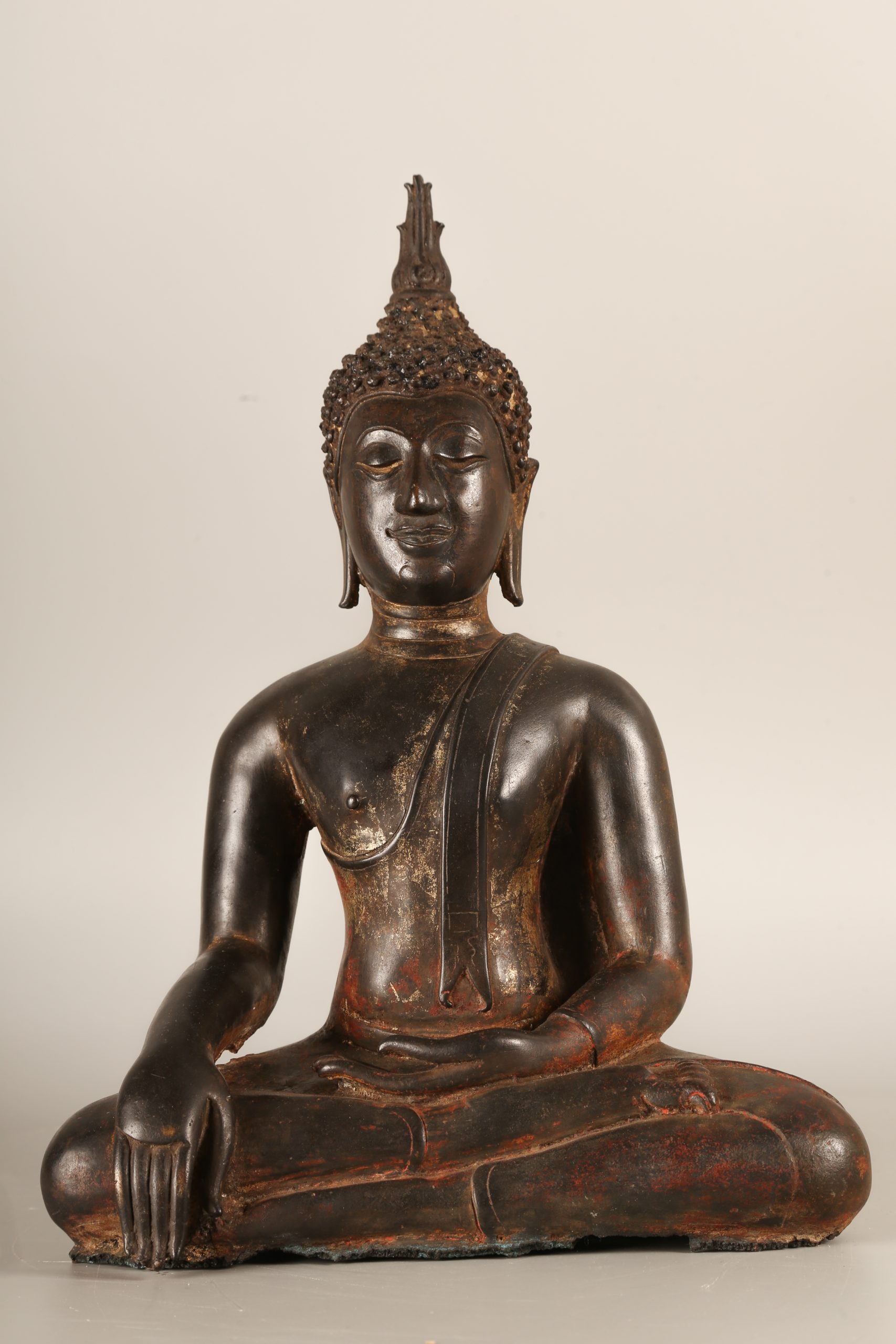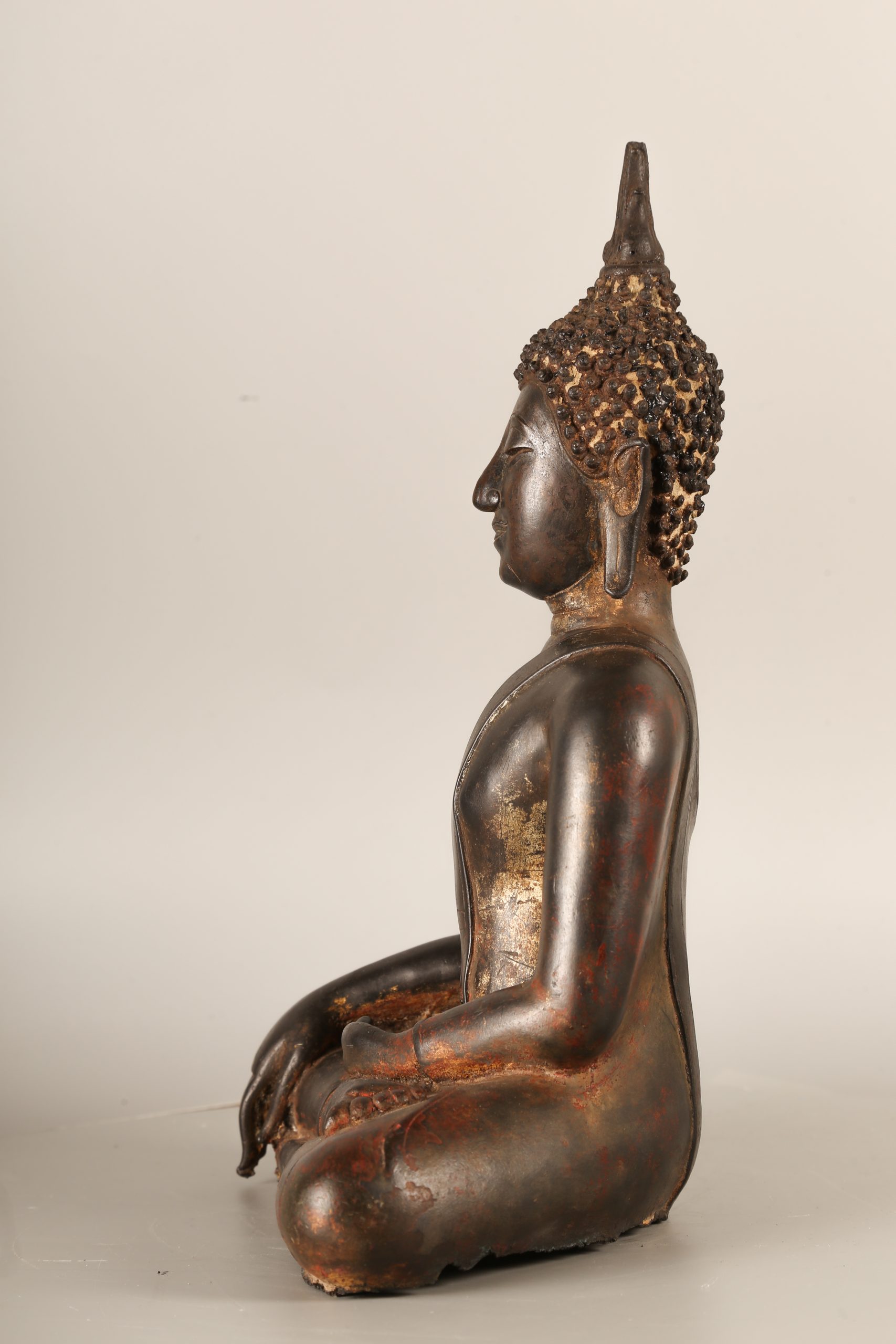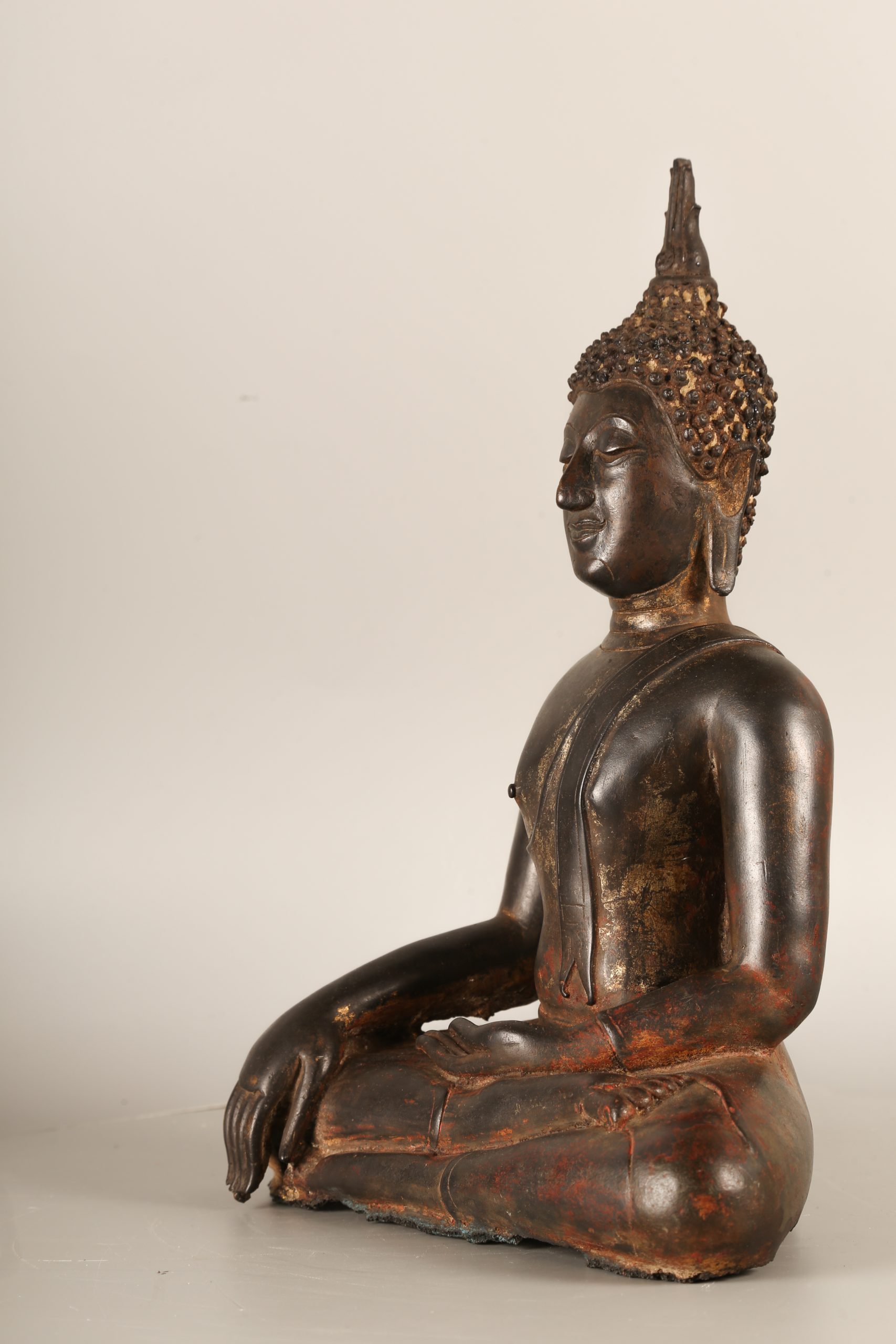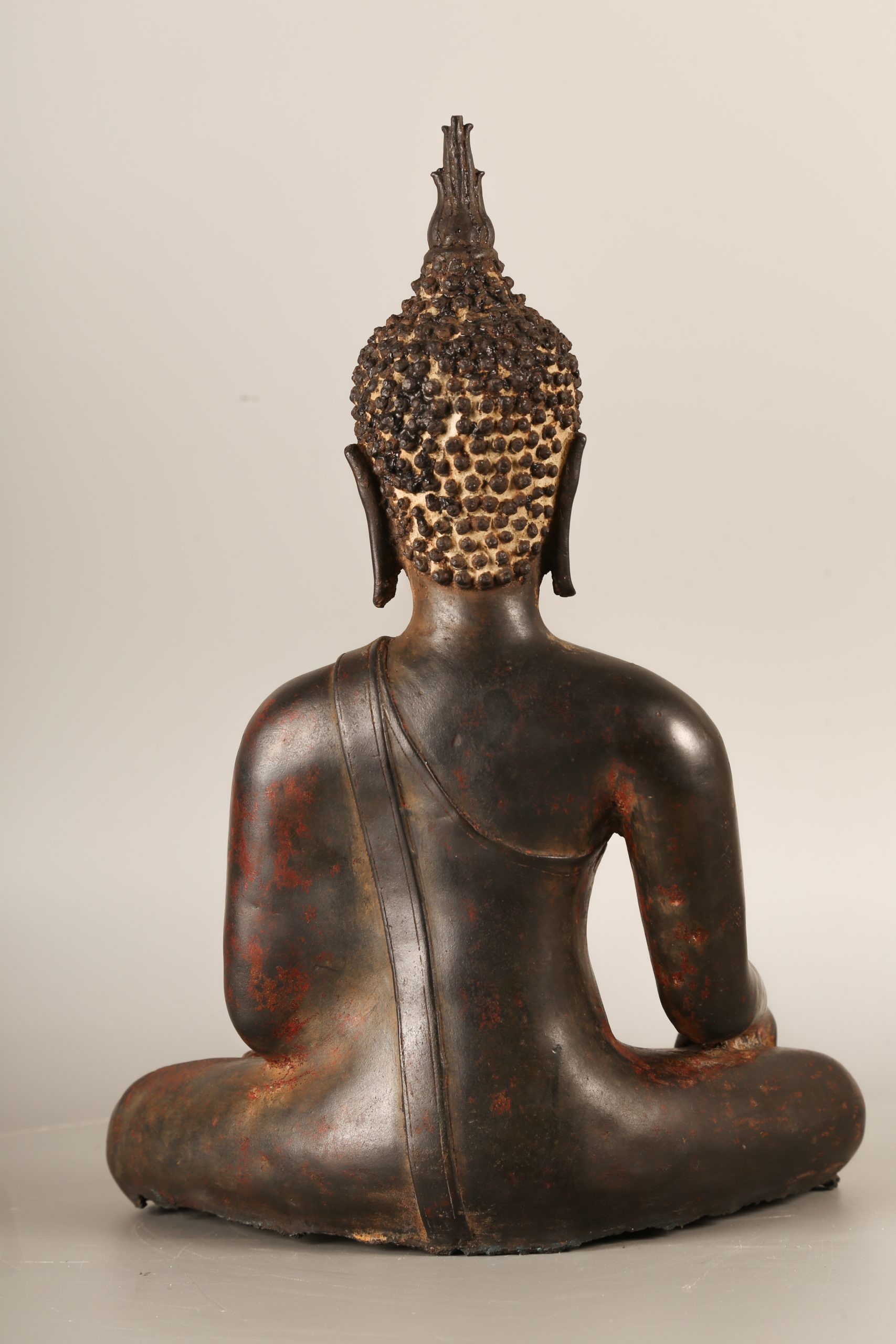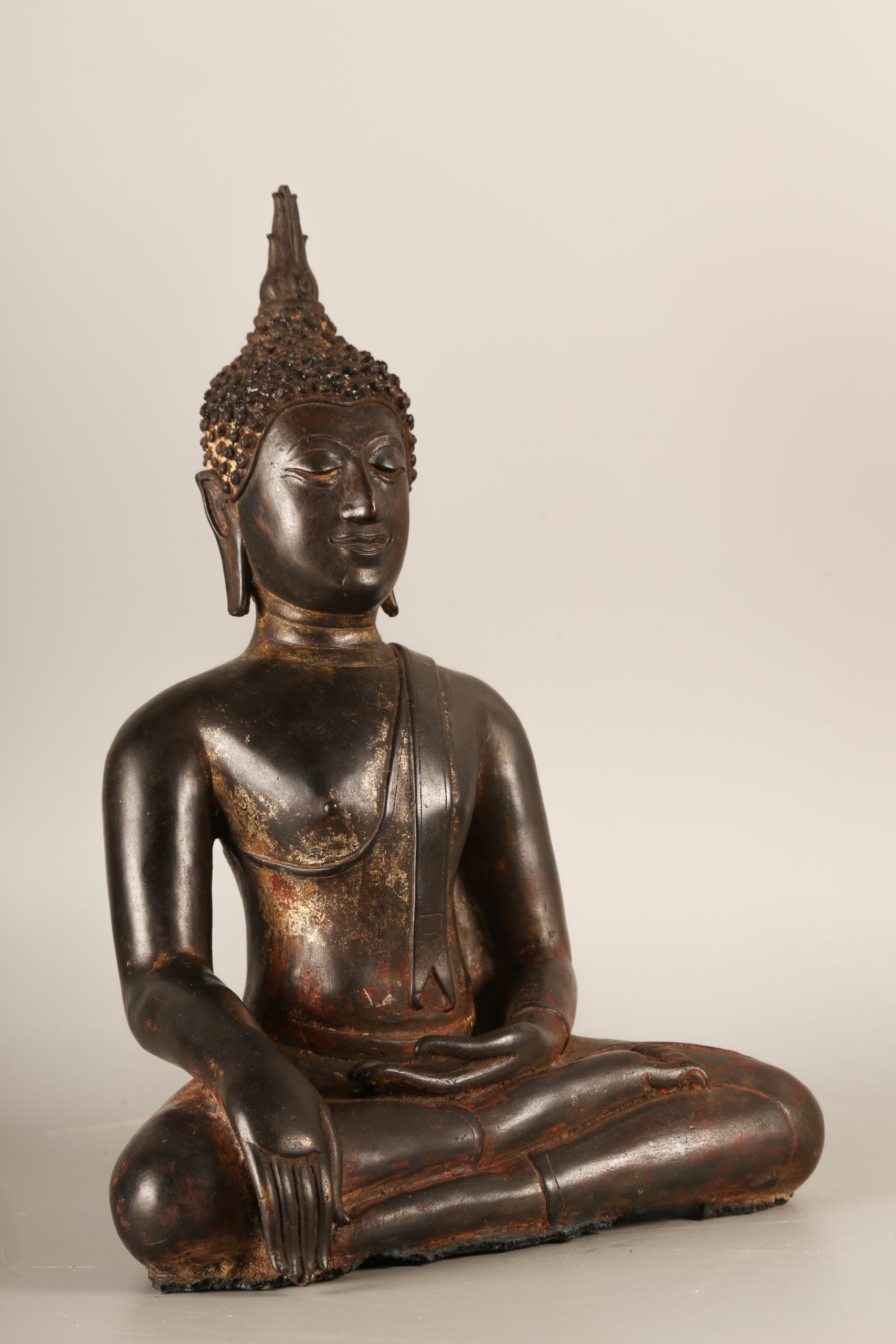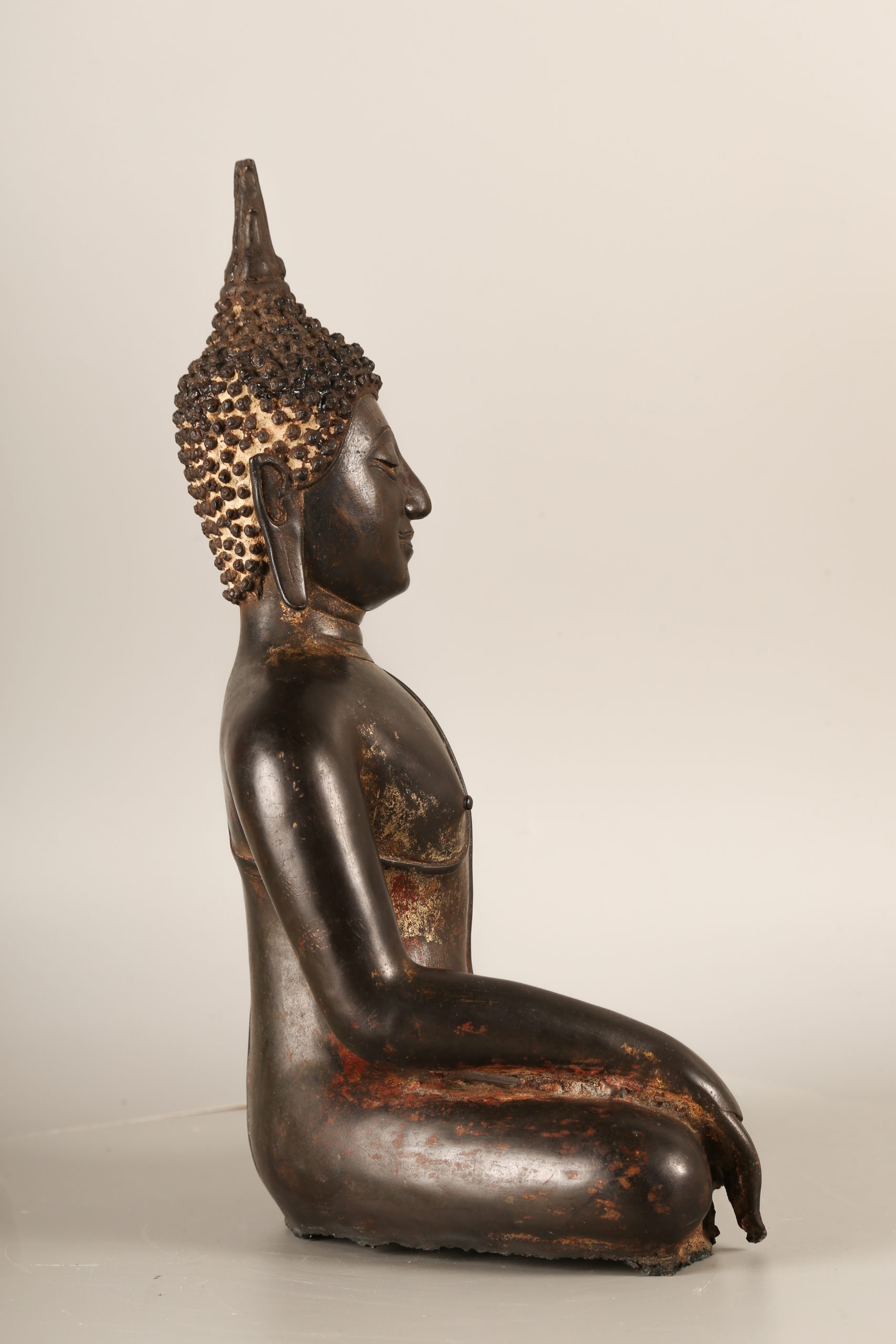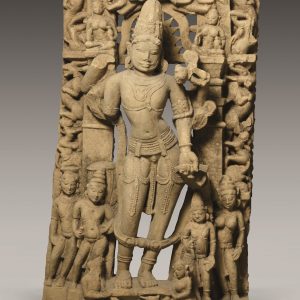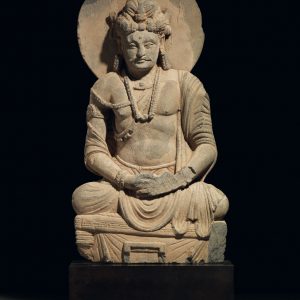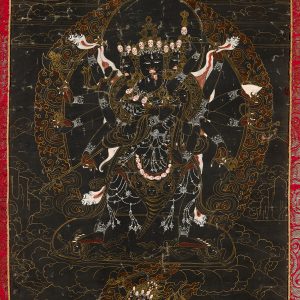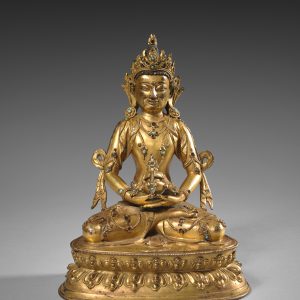Seated Buddha
Copper alloy
Thailand
14th-15th century, Sukhothai Kingdom
H. 33.5 cm
Description
It was from the 13th century onwards that the emerging Thai kingdom of Sukhothai ceased to represent the Buddha in the Khmer manner, and developed its own emblematic image. The powerful kingdom of Sukhothai reached its political peak during the reign of Rāma Kamheng (r. ca. 1279-c. 1299) and his successors. The sculptors created an original aesthetic that became one of the most original styles in Thai art and remained a recurrent aesthetic reference until the end of the 19th century.
This particular iconography can be found on the present sculpture: his limbs, and in particular his fingers and feet, are elegantly elongated. His features are characteristic: the pensive face is decorated with arched eyebrows, which meet above his aquiline nose. His mouth is set in a discreet but serene smile. At the top of the skull, above the highly developed protuberance (or uṣṇīṣa), stands a flame (rasmi), a symbol of the Blessed One’s spiritual strength. Fortunately preserved, this ornament is an influence of Sri Lankan art.
The well-preserved bronze patina here retains traces of gilding, particularly on the torso and hair, giving a nice variety of shades to the polish. The Buddha is seated here in the virasana posture. The body is supple and graceful, emphasised by the drape of the monastic robe that covers the left shoulder.
The whole has a regular and elegant appearance, with well- cut volumes and shapes, as well as remarkably incised details.

